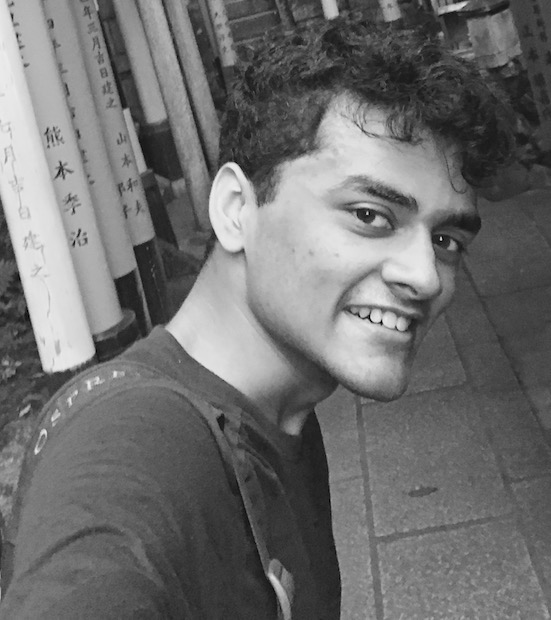About
Hello! You've reached Valli, a quiet but curious Machine Learning and Artificial Intelligence enthusiast, Practicing Pianist, Puzzle Lover, Anime Watcher, Food Explorer and Travel Afficianado.
You can find a bit more about me below. Should you wish to contact me, the details are to the right. Thanks for visiting!
Publications
Abstract: In this paper, we introduce a new set of reinforcement learning (RL) tasks in Minecraft (a flexible 3D world). We then use these tasks to systematically compare and contrast existing deep reinforcement learning (DRL) architectures with our new memory-based DRL architectures. These tasks are designed to emphasize, in a controllable manner, issues that pose challenges for RL methods including partial observability (due to first-person visual observations), delayed rewards, high-dimensional visual observations, and the need to use active perception in a correct manner so as to perform well in the tasks. While these tasks are conceptually simple to describe, by virtue of having all of these challenges simultaneously they are difficult for current DRL architectures. Additionally, we evaluate the generalization performance of the architectures on environments not used during training. The experimental results show that our new architectures generalize to unseen environments better than existing DRL architectures.
Link: Paper on arXiv.org, Public Release of Minecraft Mod with code for Agents
Abstract: Recent work in (deep) reinforcement learning has increasingly looked to develop better agents for multi-agent/multitask scenarios as many successes have already been seen in the usual single-task single-agent setting. In this paper, we propose a solution for a recently released benchmark which tests agents in such scenarios, namely the MARLÖ competition. Following the 2018 Jeju Deep Learning Camp, we consider a combined approach based on various ideas generated during the camp as well as suggestions for building agents from recent research trends, similar to the methodology taken in developing Rainbow (Hessel et al. 2017). These choices include the following: using model-based agents which allows for planning/simulation and reduces computation costs when learning controllers, applying distributional reinforcement learning to reduce losses incurred from using mean estimators, considering curriculum learning for task selection when tasks differ in difficulty, and graph neural networks as an approach to communicate between agents. In this paper, we motivate each of these approaches and discuss a combined approach that we believe will fare well in the competition.
Link: Paper in CEUR Workshop Proceedings: http://ceur-ws.org/Vol-2282/MARLO_110.pdf
Work Experience
Supervised By: Yu-Han Liu and Taehoon Kim
Supervised By: Toshiki Kataoka and Brian Vogel
Supervised By: Professor Satinder Singh Baveja
Course Notes: Jupyter Notebook Lecture Slides
Neural Networks/Deep Learning Homework Assignment: Assignment document , Skeleton code Zipfile , Solution Zipfile
Resources: Website on Project Malmo GitHub page
Projects
Some projects that have arisen out of side hobbies and past work.
Studied depression and reward processes through computer models for Serotonergic Neurons in the Dorsal Raphe Nuclei.
Resources: Paper , Zipfile with code
Created a Java + MinecraftForge + Project Malmo tutorial to create a simple task in the Minecraft AI Platform, Project Malmo, where an agent is to copy a given structure using build, break, and move actions.
Resources: Website on Project Malmo GitHub page
Designed EECS 445 (Machine Learning) Homework Assignment to implement Backpropagation Neural Networks.
Resources: Assignment document , Skeleton code Zipfile , Solution Zipfile
Initial look to Machine Learning techniques, namely One-Class SVMs and LSTMs, to devise methods of detecting malicious messages passing through primary vehicle computer systems (the CAN bus in particular).
Resources: Paper
Developed a Deep-RL agent that performed better than previous state-of-the-art agents in environments with stochasticity through minimization of error in next state prediction, given ("noised" state, action taken) pairs.
Resources: Paper
Created a systems dynamics model of a large network in conjunction with real world statistics obtained from Google Analytics to identify common behavior patterns that lead to keyword popularity increase and decrease.
Resources: Paper
Extended on Schelling's experiment using computer models to explain how social groups are formed and how the preferences of people affect underlying social network structure.
Resources: Paper
Used different complex systems models such as Voronoi maps to find social and political scenarios where the opinions of a group do better than the opinion of a few experts.
Resources: Paper (Q&A Style) , Paper (Extended Study)
